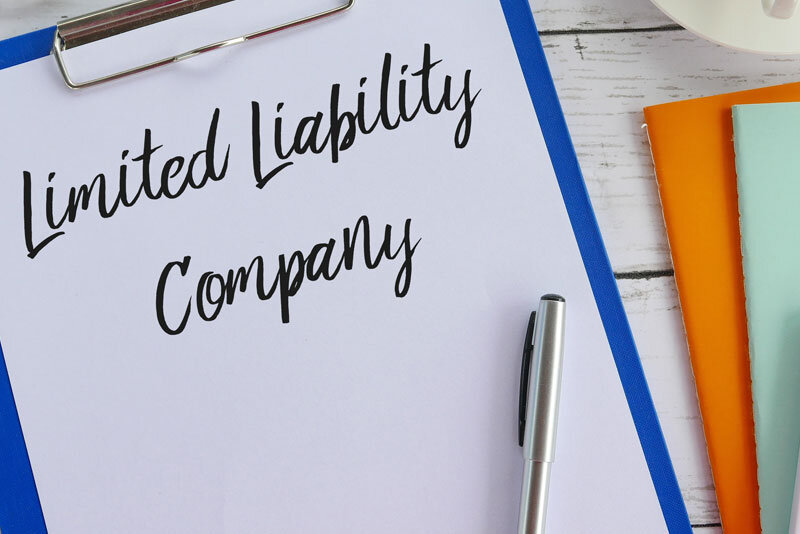It’s estimated that over 70% of U.S. businesses operate as sole proprietors. That’s not surprising, considering that doing so requires no formal business registration forms, few compliance requirements, and income tax reporting simplicity. But as businesses grow and evolve, their owners may decide to change from a sole proprietorship to an LLC.
Many choose the limited liability company (LLC) structure because it offers nearly the same ease of administration as a sole proprietorship while providing some important advantages. In today’s post, we’ll review these advantages and walk through how to change from sole proprietor to an LLC.
Potential Benefits of Changing to an LLC
So, what’s wrong with operating as a sole proprietorship? Well, possibly nothing — but it depends on the situation. No entity type is ideal for every business!
There is no legal or financial separation between the business owner and the company in a sole proprietorship. Therefore, if someone sues the business or the company runs into money troubles, the owner is personally responsible for any legal claims and debts. That puts the owner’s home, cars, bank accounts, retirement savings, and much more at risk of being taken to settle those obligations.
By forming an LLC, business owners (called members) can help protect their personal assets and property. An LLC is a separate legal entity from its owners. So, under most circumstances, an LLC’s owner is not personally liable for the legal and financial debts of the business.
Also, an LLC provides tax flexibility. By default, an LLC is taxed the same as a sole proprietorship, with all profits and losses flowing through to the owner’s individual income tax returns. However, LLCs that meet the IRS’s eligibility requirements may elect to be taxed as an S Corporation to help alleviate some of the self-employment tax burdens on their members.
Top Signs It’s Time to Convert a Sole Proprietorship Into an LLC
Why change from a sole proprietorship to an LLC? Here are several signs that a switch might be advantageous.
- The business owner is concerned about having their personal property subject to a lawsuit against the business. (Perhaps because the company’s work is prone to risks, the company needs to hire employees, or other reasons.)
- The business owner is getting hit with a high self-employment tax burden and would like more income tax options. (For instance, the S Corp election results in only the owner’s wages and salaries getting hit with Medicare and Social Security taxes. In a sole proprietorship, ALL of the business’s profits are subject to those taxes.)
- The business owner wants to seek outside funding to grow the company and finds that investors will only fund it if it’s established as a legal business entity.
- The business owner has discovered that some customers and vendors are hesitant to work with a company that isn’t established as a formal business entity. (LLC after the name might add credibility.)
Choosing and changing a company’s business structure comes with legal and financial ramifications. Therefore, it’s crucial that business owners speak with their attorneys and tax advisors for guidance when making decisions.
How to Switch to an LLC
Generally, most sole proprietors are allowed to change to an LLC. However, some states require certain licensed professionals (e.g., attorneys and physicians) to organize as different types of entities. Whenever considering a change to legal structure, business owners should make sure they know their state’s restrictions and requirements.
That said, the process for changing from a sole proprietorship to an LLC is fairly similar in all states. Below, I’ve listed the typical steps. Keep in mind that there are nuances from state to state, so it’s mission-critical that sole proprietors research what they must do to legally make the switch.
1. Find Out If Your Business Name is Available
Let’s say that a sole proprietor is running her dog grooming business under the fictitious name (DBA), “Furry Friends Salon.” If she wants to form an LLC for her business, she must check that another LLC or corporation hasn’t already registered a company using that name in her state. Most states offer an online database for checking business name registrations. CorpNet’s free CorpNet Name Search tool provides a way to check, too.
2. File Registration Paperwork with the State
States require business owners to submit LLC registration paperwork, usually called Articles of Organization, with their Secretary of State (or comparable) office.
Articles of Organization documents request information such as:
- Name and address of the LLC.
- The LLC’s purpose. To allow for flexibility in business activities, entrepreneurs often answer this in general terms, such as “The purpose of the Limited Liability Company is to engage in any lawful activity for which a Limited Liability Company may be organized in this state.”
- Name and address of the LLC’s registered agent. Sole proprietors do not need to appoint a registered agent, but LLCs and corporations do. A registered agent receives service of process and other important government and legal documents on behalf of the business.
- Whether the LLC will be member-managed or manager-managed. This identifies if the owners (members) will be responsible for day-to-day management or if the LLC will have a designated manager to perform that function.
Most states have an online portal or section of their website where business owners may file their Articles of Organization (and pay the related filing fee) electronically. While the document is relatively straightforward, realize that any errors on it may delay the entity’s formation and create additional costs (normally, filing fees aren’t refundable).
3. Create an LLC Operating Agreement
Some states require LLCs to create an operating agreement and keep it at the business’s principal office location. Even when a state does not mandate one, an LLC Operating Agreement can prove immensely beneficial — especially for a multi-member LLC. It is an official contract that spells out the management and ownership of the LLC. It provides legal clarification of how the LLC should be run by documenting details like members’ ownership percentages, voting rights, distribution of profits and losses, and other important considerations. An operating agreement helps to keep everyone on the same page and prevents misunderstandings.
4. Obtain an EIN from the IRS
Business owners must apply for an EIN (Employer Identification Number) with the IRS. Even if a sole proprietor has already obtained an EIN, they will likely need to apply for a new one when forming an LLC. EINs are used to open business bank accounts, file taxes, handle payroll, and obtain business credit.
Read More About Payroll: What is Payroll?
5. Set Up a Business Bank Account
LLC owners must maintain a clear separation between their business and personal finances. Doing so shields their personal assets from the business’s liabilities. Also, it helps keep business records organized for tax reporting purposes.
After a state approves an LLC’s Articles of Organization and the IRS issues the LLC an EIN, the business owner must set up a business account for the newly formed LLC. An LLC may not use an existing business bank account that was set up for a sole proprietorship.* This also applies to credit cards so that the correct legal entity name is associated with accounts.
Banks help entrepreneurs through the process of closing their sole proprietorship’s bank account, opening an LLC bank account, and moving existing business funds from the old account to the new one.
*Sometimes, sole proprietors don’t even open a separate bank account for their businesses and use their personal bank and credit accounts instead. While that’s legal, it’s not advisable! If the IRS were to audit the business owner, it might be difficult to produce accurate financial transaction documentation.
6. Reapply for Business Licenses and Permits
Do not assume that business licenses and permits obtained by a sole proprietorship will remain valid when the business becomes an LLC. Some states and local licensing agencies will not transfer them. It’s critical to check the state, county, and municipality’s rules. Without licensing and permit requirements in place, an LLC will not be operating legally.
Tip: Consider using CorpNet’s business license services to determine requirements and complete applications at the federal, state, and local levels.
7. Have a Plan for Maintaining Your LLC’s Compliance
All LLCs have ongoing responsibilities to stay compliant with their state’s rules. Those rules can vary from one state to the next.
Examples of Possible Ongoing Compliance Responsibilities
- Filing annual reports (which might be annual, biannual, or on some other timetable)
- Reporting and paying taxes
- Renewing business licenses and permits
- Maintaining a registered agent
- Holding an annual member meeting and recording minutes from that event.
- Keeping business and personal financial transactions and records separate
If the business owner fails to stay on top of these tasks, they may face loss of personal liability protection because they’ve pierced the corporate veil. Also, the LLC may face fines, penalties, and even administrative dissolution (forced closing) of the business.
I cannot stress enough how critical it is for entrepreneurs to monitor compliance deadlines and carry out their responsibilities on time. For assistance in tracking requirements and due dates, I suggest using CorpNet’s free compliance portal and keeping a calendar of approaching obligations.
Ask CorpNet to Help
When you’re ready to make the transition from sole proprietor to LLC, contact my team of filing experts at CorpNet. We’re here to save you precious time and take the guesswork out of preparing and submitting your business registration and compliance paperwork!





